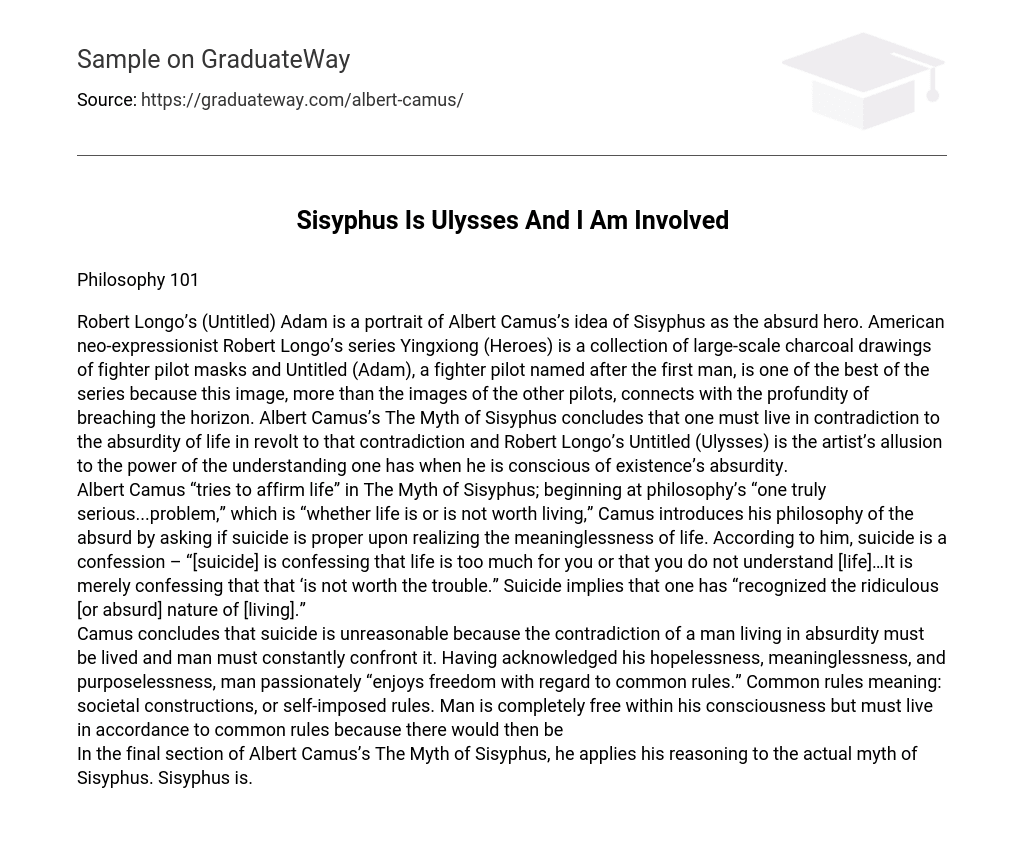Philosophy 101
Robert Longo’s (Untitled) Adam is a portrait of Albert Camus’s idea of Sisyphus as the absurd hero. American neo-expressionist Robert Longo’s series Yingxiong (Heroes) is a collection of large-scale charcoal drawings of fighter pilot masks and Untitled (Adam), a fighter pilot named after the first man, is one of the best of the series because this image, more than the images of the other pilots, connects with the profundity of breaching the horizon. Albert Camus’s The Myth of Sisyphus concludes that one must live in contradiction to the absurdity of life in revolt to that contradiction and Robert Longo’s Untitled (Ulysses) is the artist’s allusion to the power of the understanding one has when he is conscious of existence’s absurdity.
Albert Camus “tries to affirm life” in The Myth of Sisyphus; beginning at philosophy’s “one truly serious…problem,” which is “whether life is or is not worth living,” Camus introduces his philosophy of the absurd by asking if suicide is proper upon realizing the meaninglessness of life. According to him, suicide is a confession – “[suicide] is confessing that life is too much for you or that you do not understand [life]…It is merely confessing that that ‘is not worth the trouble.” Suicide implies that one has “recognized the ridiculous [or absurd] nature of [living].”
Camus concludes that suicide is unreasonable because the contradiction of a man living in absurdity must be lived and man must constantly confront it. Having acknowledged his hopelessness, meaninglessness, and purposelessness, man passionately “enjoys freedom with regard to common rules.” Common rules meaning: societal constructions, or self-imposed rules. Man is completely free within his consciousness but must live in accordance to common rules because there would then be
In the final section of Albert Camus’s The Myth of Sisyphus, he applies his reasoning to the actual myth of Sisyphus. Sisyphus is.





